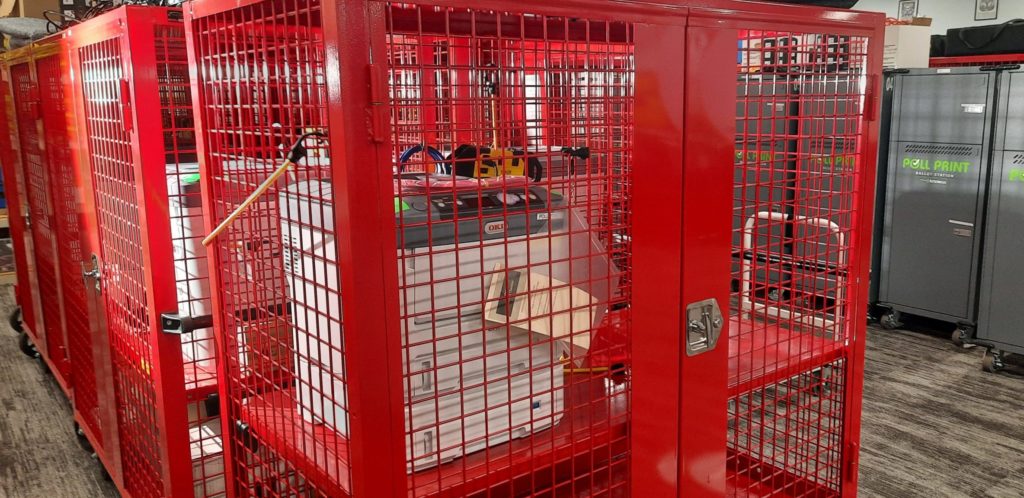Follow the Ballot: How Utah ballots are tabulated and audited
Feb 25, 2022, 6:45 AM | Updated: Nov 8, 2022, 11:36 am
SALT LAKE CITY — When a mail-in ballot is cast in Utah before the envelope is ever opened, the voter belonging to that ballot is verified. Machines scan the envelopes, verify signatures, and verify that the voter only voted once.
Then, the machine sorts the ballots into batches.
If a signature doesn’t match the voter on file, or the machine doesn’t recognize the ballot envelope’s unique barcode, the machine kicks it out for human eyes to review.
Trained poll workers review signatures not necessarily looking for the names to match but for similarities in markings.
If the machine can’t verify one of five signatures stored in Utah’s statewide voter database, the ballot is set aside for a process known as ballot “curing.” Voters are called, emailed, or sent a text giving them the opportunity to fix their ballot.
And only after all of those checks are met do, we actually open the envelope and extract the ballot,” said Weber County Clerk Ricky Hatch
Ballots are opened face down for extra security. The physical paper copies and envelopes are logged and stored under lock and key for 22 months.
How Utah ballots are tabulated
The machine that actually reads the votes is not connected to the internet. It has no modem, its only connection is to a power source.
“The process is also filmed,” said Hatch. “They place the ballots into this hopper at the top, it comes up and the rollers suck it through, and it curves down.”
This is all done in teams of two poll workers with supervisors nearby.
The scanner takes an image of the front and back of the ballot, and it reads the votes, converting them into what’s called a “cast vote record.” Votes are then stored on this machine until it’s time to transfer them to to be tabulated. They are backed up “a couple of times,” Hatch said. And wiped clean before the next election.
The scanner kicks out any ballots it can’t decipher to be set aside for a separate process where two humans decide the voter’s intent. That process is called adjudication. Those ballots are logged to make the number of ballots in the batch match the total on the batch’s reconciliation form.
A guide teaches poll workers to determine who the voter intended to vote for. If the bubble isn’t filled in correctly, both poll workers have to agree for the ballot to count. If they don’t a supervisor steps in.
Counting the votes
The machine will tally the votes is on a separate computer, also not connected to the outside world.
“[It’s] stored a locked room, inside a locked room, inside a locked building,” said Hatch.
The votes are placed on a special encrypted flash drive. The drive is made specifically by the manufacturer of the same machine that scans and reads the votes.
“If we tried to upload a flash drive that wasn’t pre-programmed for this election, it would kick it out, and say, ‘sorry that’s not right,'” Hatch said.
The votes are then walked to the tabulation server and they’re counted starting on election night. For statewide races, the results, not the live votes, are sent to the Lt. Governor’s office to be aggregated.
How Utah Ballots are audited
How do clerks know the machines are counting correctly? That’s where a pre-election audit comes in. In fact, Utah law requires three audits at different stages of the election.
The pre-election audit is first. Clerks test the machines, zero out the special flash drives, and do test batches called Logic and Accuracy Tests.
“That’s done in a public meeting, that’s publicly noticed, the public is able to attend that. And that’s really the first check that’s important,” said Utah’s Director of Elections, Ryan Cowley.
Next, one percent of all the signatures stored on file is verified and audited.
And finally, a post-election audit checks that a sample of the ballots was tabulated correctly. The Lt. Governor’s office, which doesn’t tabulate elections, but rather supervises them, picks a 1% sample. The clerks will check that those ballots were correct.
“They compare it to see, ‘okay this is what it [the vote cast] looked like [on the ballot], this is how the machine read it, is that accurate,'” said Cowley.
Hatch checked with at least 10 of Utah’s counties, including Salt Lake, Utah, and his own Weber County. He found that over the past 10 years, only Tooele had a minor discrepancy in a post-election audit. And it was corrected before the results were certified.
Cowley and Hatch both agree, Utahns don’t need to worry that their votes won’t count.
“To be able to cheat the system, those are things that keep us up at night. And we are just as concerned if not more concerned than just about anybody out in the public.”














